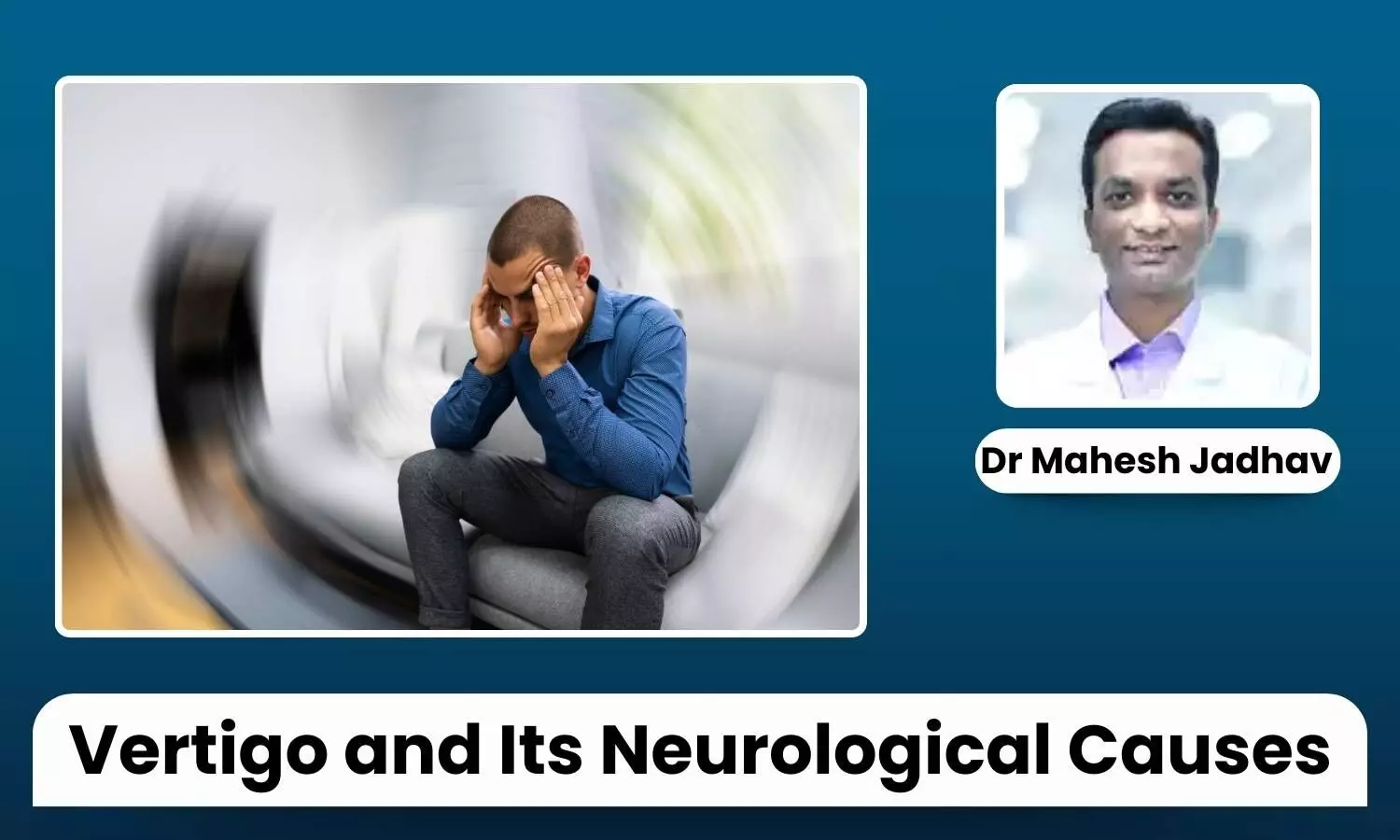World Spinning: What You Need to Know About Vertigo and Its Neurological Causes - Dr Mahesh Jadhav

When a person has vertigo, they feel as though their environment is moving even though there isn't any actual motion. Extreme vertigo can make it difficult to balance or carry out regular tasks.
Vertigo can strike out of nowhere and last anywhere from a few seconds to days or more. This sensation can be defined by dizziness or spinning. The symptoms of vertigo include nausea, vomiting, dizziness, and difficulty walking. Vertigo is not a disease in and of itself, but rather a symptom of several underlying conditions.
There are multiple causes of vertigo, ranging from migraine headaches, arrhythmia, and diabetes to neurological causes.
Vestibular Migraine
Vestibular migraines have a special effect on the vestibular system, which regulates balance and spatial orientation. These migraines cause disturbances in the vestibular nuclei, which are areas of the brainstem that process information about balance.
Unlike ordinary migraines, vestibular migraines may not always result in a headache. Instead, they often manifest as vestibular symptoms such as lightheadedness, vertigo, or problems with balance.
People with vestibular migraines frequently have a history of frequent migraines and increased sensitivity to motion. These sensations can be confusing and significantly impact everyday tasks.
Multiple sclerosis (MS) and Strokes
Both multiple sclerosis (MS) and strokes, particularly transient ischaemic episodes (TIAs), can cause vertigo, though they do so in different ways.
In multiple sclerosis, the immune system attacks the nerves' protective coating, causing damage to the nerves. This injury can affect the nerves responsible for balance and coordination, leading to vertigo, a sensation of spinning or losing equilibrium. This symptom can be quite incapacitating and often coexists with other neurological impairments caused by multiple sclerosis.
However, when blood supply to the brain is reduced or disrupted, strokes and transient ischaemic attacks (TIAs) happen. If the brainstem or cerebellum—two crucial regions for processing balance and spatial orientation—are affected, vertigo could appear as a symptom. In these cases, the reduction in blood flow damages the brain cells, disrupting the balance-maintenance mechanisms.
Cerebellar Tumours
Chronic vertigo might come from cerebellar tumours that disrupt the brain's capacity to interpret balance cues. This is similar to how Chiari malformation, a structural abnormality that pushes the cerebellum into the spinal canal, can induce symptoms like dizziness and poor coordination, as well as impair balance. A doctor is required to treat both disorders.
Vestibular Neuritis
The inner ear disorder known as vestibular neuritis is brought on by inflammation of the vestibular nerve. This nerve oversees communicating balancing information to the brain from the inner ear.
When it becomes inflamed, it interferes with these signals, causing severe and protracted vertigo episodes that are frequently accompanied by nausea and balance issues.
Epilepsy
Vertigo can sometimes occur during an epileptic aura or focal seizures, especially when they affect the temporal lobe. During these seizures, abnormal electrical activity in the brain's vestibular system can cause a rare type of partial seizure.
This seizure is often marked by a spinning or whirling sensation and can sometimes result in convulsions. The sensation of vertigo in these cases is part of the aura or the beginning phase of the seizure.
Brainstem Lesions
Vertigo can arise from changes in the vestibular pathways caused by brainstem lesions from diseases such as ischaemia or demyelination. When brainstem lesions impair the brainstem's capacity to interpret vestibular signals, vertigo can develop.
Through the integration of sensory data from the body, eyes, and inner ear, the brainstem preserves equilibrium and spatial orientation. Lesions in this area can cause distorted vestibular processing, which can lead to vertigo.


